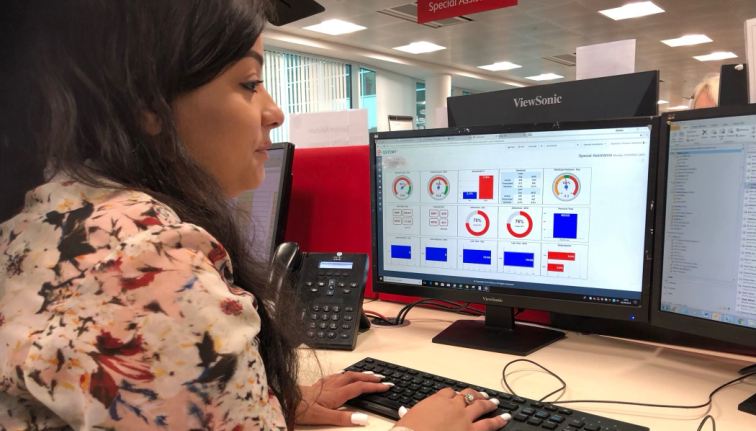The Intraday Story – Four Reasons to Think Again about Real-Time
Paddy Coleman at QStory takes a closer look at how intraday automation is the next step-up in contact centre performance

Whether it’s called real-time or intraday management, real-time is back on the contact centre agenda with a vengeance. The need to be as proactive as possible is huge driver in contact centres. However, with unexpected changes in call volumes and high levels of absenteeism, the engine room of many organisations’ sales and customer service operations, are notoriously difficult to manage. There has to a better, altogether easier way of restoring order in today’s challenging contact centre environment and the answer lies in automation.
I imagine many of you are shaking your heads thinking “we’ve heard all this before” or “we already do Intraday, don’t we?” The reality is that the lack of understanding about the differences between real-time adherence (RTA), workforce optimisation and real-time or intraday management has muddied the waters. So just what does Intraday Automation really mean?
 What is True Intraday Automation?
What is True Intraday Automation?
True intraday automation identifies and recommends the changes that are needed during the day, before the events happen, to match the demand and resources available. All this is done while communicating with agents and supervisors in addition to creating the required reports automatically, within seconds. Using intraday automation for daily re-forecasting means quiet time can be identified in advance so it can be better utilised for all important one-to-one coaching sessions, team meetings or additional training etc. On the other hand if shortfalls and service level targets are at risk agents scheduled for lower priority activities can be called upon to cover any gaps in staffing, shifts can be extended or home-working agents requested to log-on via the system.
Technology is a powerful enabler and offers the solution to the complexity and time-consuming nature of real-time management. Research suggests that companies which have implemented intraday automation enjoy a 55% year-on-year improvement in staff utilisation rates and a 37% uplift in customer satisfaction scores compares to those who haven’t.
Recognise a theme? Intraday automation is the proactive management of a contact centre’s resources. The clue is in the word ‘automation’, without which it’s so easy to stumble from crisis to crisis, making contact centre management a futile task, a bit like bailing water from a ship with an egg-cup.
How to turn crisis to your advantage in four simple steps
Intraday automation gives organisations the power to turn bad into good and crisis to advantage by being able to avoid it in the first place. The ability to track, forecast and adjust dynamically every element of the contact centre puts you in complete control. Companies which deploy the latest intraday automation technology can expect to enjoy the following four benefits:
1. Proactive view of the day – the Aberdeen Group has quantified the benefit of a proactive approach using intraday automation claiming that organisations that do achieve 30% greater profitability than those who don’t.
The latest solutions automatically track staff attendance, skills available and workload during the day. They can identify potential service level risks or staffing problems and recommend in advance how to fix things.
2. Automatic schedule adherence – real-time adherence (RTA) is monitored and automatically nudges agents who are late back from meetings or breaks via the Agent App on their smartphone. Any changes that have been agreed during the day are automatically updated on the schedule and the relevant supervisors and agents notified accordingly
3. Achieve training programme objectives – when service levels are squeezed, training is often the first casualty. Intraday automation both protects service levels so planned training won’t be cancelled and closes the Quality Assurance (QA) loop to prioritise new training sessions during quiet times
4. Automatic reporting – not just what, but why – intraday automation has the ability to produce automated performance reports explaining not just what happened, but why it happened within seconds of receiving the data. This saves time and gives organisations total data transparency across all departments including planning, operations and contact centre management.
Managing the unexpected can give an organisation a huge advantage operationally, financially and competitively. It’s time to think again about real-time and intraday automation technology.

 What is True Intraday Automation?
What is True Intraday Automation?




